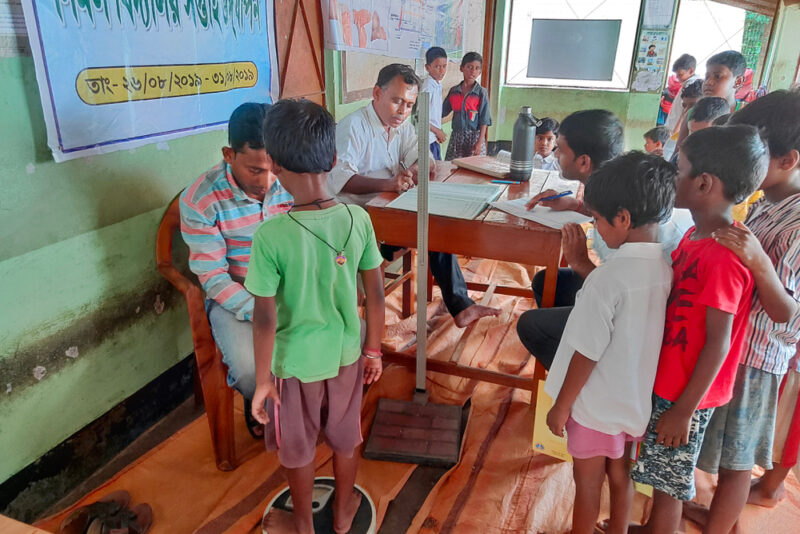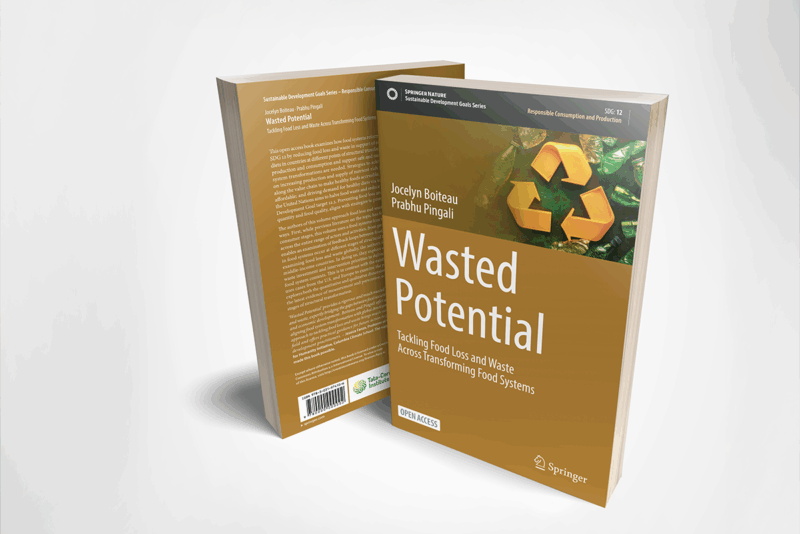Can Gene-Edited Crops Revolutionize Agriculture in Developing Countries?

The emergence of gene-editing technologies, particularly CRISPR-Cas9, has ushered in new possibilities for transformative advancements in agriculture, healthcare and environmental sustainability. The discovery of CRISPR-Cas9 in 2012 has the potential to accelerate the pace of innovation and enable more precise interventions in biological systems. Unlike traditional genetic modification (GM), which often involves inserting foreign DNA into a host organism to introduce new traits, gene editing enables precise alterations without introducing external genetic material. Genome editing enables faster trait development, reduces research and development costs, and facilitates the development of novel traits that were previously impossible using traditional crop improvement methods. However, as science progresses, the broader social, ethical, and ecological implications of gene editing must be carefully examined to ensure that its benefits are equitably distributed and its risks responsibly managed. Earlier technologies, such as genetically modified crops, failed to reach farms despite their potential. Therefore, the expectations for any prospective technologies must be tempered in this context, especially in view of market failures in reaching resource-poor farmers and consumers.
Gene-edited crops regulated as conventional plant breeding
Gene-edited crops, at first glance, appear less prone to public stigmatization than traditional genetically modified organisms (GMOs), primarily due to fewer biosafety concerns and their similarity to the products of conventional plant breeding. However, the technology’s flexibility allows for the insertion of foreign genetic material when needed, which raises potential risks that warrant thorough evaluation. These include unintended genetic alterations, allergenicity, carcinogenic potential and broader environmental impacts.
In response, countries around the world are revising their regulatory frameworks to align with the evolving nature of gene-editing technologies. A key distinction has emerged between gene-edited organisms that do not contain foreign DNA—typically classified under Site Directed Nuclease (SDN)1 and SDN2 techniques—and those that do. Many nations now treat gene-edited crops without foreign genetic material as equivalent to conventionally bred crops, exempting them from the stricter regulatory standards applied to traditional GMOs.
As gene-editing technologies continue to advance, the global regulatory landscape will likely remain dynamic, reflecting diverse societal values, scientific assessments and policy priorities.
Many countries—including the United States, Canada, Argentina, Brazil, Chile, Costa Rica, Paraguay, Uruguay, Colombia, Honduras, Ecuador, Japan, Australia, Israel, China, India, Bangladesh, Indonesia, Pakistan, Kenya, Nigeria, and Malawi—have adopted such exemptions in their policies. Meanwhile, regulatory debates remain active in nations such as South Korea, Switzerland, Norway, the European Union, Cuba, Guatemala and El Salvador. On the other end of the spectrum, countries like Mexico, Bolivia, Peru and New Zealand have opted for outright bans on gene-edited crops, regardless of the presence of foreign genetic material. As gene-editing technologies continue to advance, the global regulatory landscape will likely remain dynamic, reflecting diverse societal values, scientific assessments and policy priorities.
Approved gene-edited crops for food security
Several gene-editing technologies for field and horticultural crops, livestock, and fisheries have been commercialized in both developed and developing countries. Unlike conventional genetically modified crops, which have largely been limited to non-food applications, many gene-edited crops are directly intended for human consumption. These include staple and high-value food crops such as rice, wheat, corn, soybean, tomato, lettuce, potato, mushroom, apple, and banana.
The broader application of gene editing to food crops has significant implications for food and nutritional security. In addition to improving yield and quality, these innovations can enhance resilience to climate change by conferring tolerance to abiotic stresses such as drought, salinity and alkalinity. This positions gene-edited crops as a valuable tool for addressing both global food system challenges and environmental sustainability.
Approved Gene-Edited Crops and Traits
|
Crop |
Product |
Country |
Company |
Year of approval |
Description |
|
Rice |
Pusa DST Rice 1 |
India |
Indian Council of Agrl. Research, New Delhi |
2025 |
Improvement over mega rice MTU-1010 with drought and salt tolerance, lower GHGs |
|
|
DRR Rice 100 (Kamala) |
India |
Indian Council of Agrl. Research, New Delhi |
2025 |
Improvement over mega rice BPT 5204 with drought tolerance, early maturity, and lower GHGs |
|
Maize |
Waxy corn |
Japan |
Corteva Agriscience |
2024 |
Corn with high starch content developed using CRISPR |
|
Wheat |
Fungal-resistant wheat |
China |
Suzhou, Chinese Academy of Sciences |
2024 |
Edit approved that confer resistance to a common fungal infection called powdery mildew that can be applied to different varieties. |
|
Lettuce |
Non-browning lettuce |
USA |
Intrexon |
2024 |
GreenVenus- non-browning romaine lettuce |
|
Cattle |
Slick-coat cattle |
USA |
Acceligen |
2024 |
PRLR-SLICK cattle- Cows developed using CRISPR to grow short hair, which results in improved heat tolerance, allowing them to gain weight more easily. |
|
Canola |
Less pungent mustard greens |
United States |
Pairwise |
2023 |
Conscious Greens- Milder, less bitter mustard greens developed using CRISPR-Cas12a. |
|
Banana |
Non-browning banana |
Philippines |
Tropic Biosciences |
2023 |
Banana developed using CRISPR to slow the browning process for prolonged shelf-life |
|
Tomato |
GABA tomato |
Japan |
Sanantech Seed |
2021 |
Sicilian Rouge- Tomato edited using CRISPR to contain more GABA, a compound in tomato fruits, and known to lower blood pressure |
|
Fish |
Seabream |
Japan |
Regional Fish Institute |
2021 |
Red Seabream- Fish developed using CRISPR, disabling a gene that suppresses muscle growth and allows the fish to grow larger. |
|
|
Fast-growing pufferfish |
Japan |
Regional Fish Institute |
2021 |
Tiger Pufferfish- Fish developed using CRISPR disrupting a gene controlling appetite, allowing the fish to eat more and grow faster. |
|
Soybean |
High-oleic soybean oil |
USA |
Calyxt |
2019 |
Soybean oil with fewer saturated fats and zero trans fats, developed using a gene-editing technique called TALENs |
|
Apple |
Non-browning apple |
Canada, USA |
Okanagan Specialty Fruits |
2015*
|
Arctic Apple- Non-browning apple (multiple varieties) developed with RNA interference, a more traditional New Breeding Technique (NBT). Varieties include Golden, Granny, Fuji, Gala, Honey |
|
Mushroom |
Non-browning mushroom |
USA |
Pennsylvania State University |
2016 |
White Button Mushroom- Non-browning mushroom developed using a gene-editing technique called TALENs. |
|
Potato |
Non-browning potato |
USA, Canada |
Simplot |
2015
|
White Russet Potato- Non-browning, blight protection, lowered sugars, and low acrylamide potato developed with RNA interference |
|
Canola |
HT canola |
Canada, USA |
Cibus |
2013# |
Developed to be herbicide-tolerant canola using oligonucleotide-directed mutagenesis (ODM) |
|
Source: Global Gene Editing Regulation Tracker by Genetic Literacy Project. News Reports for rice in India. Note: * Approved later in the USA in 2017. # Approved in the USA in 2014. |
|||||
National and international public research institutions have increasingly turned to gene-editing technologies to improve so-called “orphan crops” such as millets and pulses—crops that are often neglected by major commercial breeding programs despite their importance for local food security. These efforts aim to address persistent abiotic challenges and the broader impacts of climate change, particularly in regions where conventional breeding has had limited success. However, disparities in research capacity—both between developed and developing countries, and among developing countries themselves—pose significant barriers to the equitable development and dissemination of these technologies. Without targeted support, such asymmetries risk limiting access for smallholder farmers, thereby exacerbating existing inequalities in agricultural innovation and productivity.
The involvement of the public sector can alleviate the barriers to providing access to smallholders. For example, the Indian Council of Agricultural Research (ICAR) has leveraged gene-editing tools to improve two mega varieties and released them in May 2025 as DRR Dhan 100 (Kamala) and Pusa DST Rice 1 varieties. These plants are tolerant to salinity and drought, respectively, and reduce greenhouse gas emissions by 20% while requiring less water. On the other hand, countries with relatively underdeveloped research infrastructure and manpower will need support through investments and handholding. Furthermore, the spillovers of technology development across different countries are crucial for these countries.
Unlike in the case of genetically modified crops, the international public sector represented by the CGIAR research centers has been using gene editing for crop and livestock improvement, given its noncontroversial nature and acceptability. Striga-smart sorghum, lethal necrosis-resistant maize, leaf spot-resistant groundnut, virus-resistant banana, and cassava are some of the applications in the pipeline in various CGIAR centers.
Ways forward
The active engagement of national agricultural research systems (NARSs) and international research centers will be pivotal in developing crop improvements and traits tailored to the needs of smallholder farmers in developing countries. As the global food system confronts the dual challenges of malnutrition and climate change, the urgency for such targeted innovation cannot be overstated.
In regions with relatively weaker NARS capacities—particularly in parts of Africa, Asia, and Latin America—support from international public research institutions and development donors will be essential. The successful application and widespread diffusion of gene-editing technologies will hinge on several critical factors: robust institutional mechanisms, sustained public investment, an enabling environment for private sector participation, capacity-building for both current and future plant breeders, and effective science communication to engage stakeholders and build public trust.
Importantly, genome editing should not be seen as a silver bullet for eradicating poverty or combating climate change. Its true potential lies in how effectively it is integrated into broader agricultural, environmental and social strategies.
Previous research has demonstrated that the presence and adaptability of institutions play a decisive role in either enabling or hindering the adoption of agricultural technologies—a pattern clearly observed during the Green Revolution. A predictable and transparent regulatory policy framework is critical, as it reduces uncertainty and lowers transaction costs for companies. This stability enables firms to better assess the trade-offs between marginal costs and expected marginal revenues, especially in the face of regulatory delays and compliance expenses. The stagnation in innovation and the limited diffusion of genetically modified crops over the past two decades serve as a cautionary example. These lessons underscore the need for transparent, science-based and timely regulation in the rollout of gene-editing technologies.
The concentration of patents and the complexity of the intellectual property (IP) landscape pose significant barriers to the development and equitable diffusion of gene-editing technologies, particularly for public research institutions and small- to medium-sized seed enterprises (SMEs). This uneven access threatens to limit the broader societal benefits of gene editing, especially in regions where such technologies could have the most significant impact. To address this, policymakers must establish mechanisms that enable public breeders and SMEs to access proprietary tools for crop development and commercialization without infringing on IP rights or deterring innovation.
Importantly, genome editing should not be seen as a silver bullet for eradicating poverty or combating climate change. Its true potential lies in how effectively it is integrated into broader agricultural, environmental and social strategies. When responsibly regulated and deployed alongside complementary interventions—such as improved extension services, climate-resilient farming practices and inclusive value chains—gene editing can make a meaningful contribution to sustainable development. Without such an integrated approach, however, its benefits may remain concentrated, and its promise unrealized; worse, it may exacerbate existing inequalities in agricultural systems.
Chandra S. Nuthalapati is a visiting professor at TCI.
Prabhu Pingali is the founding director of TCI.
Featured image: Genome editing enables faster trait development, reduces research and development costs, and facilitates the development of novel traits that were previously impossible using traditional crop improvement methods. (Photo by Gorodenkoff/Shutterstock)





